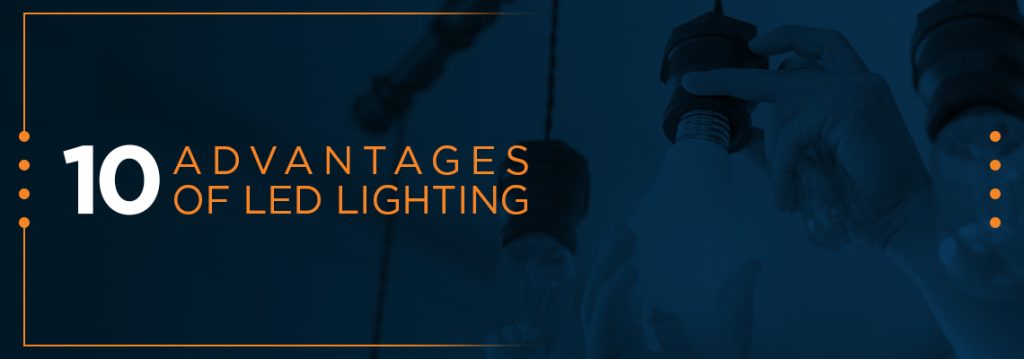
Lighting comprises a large segment of energy use in the United States and is often a component of energy-saving initiatives. Optimizing the lighting systems of a building enables businesses, shopping centers, multifamily properties, local and state government agencies, and school districts to achieve greater energy efficiency, cut utility expenses, enhance occupant safety, and hit sustainability goals. As the most energy-efficient artificial light source available, LEDs are an effective choice when aiming to reduce lighting-related energy costs and waste. Here are the top 10 advantages of LED lighting.
1. Offers a Positive Return on Investment
Long-term LED use offers a positive ROI because they require up to 90% less power than incandescent bulbs and nearly half the energy of fluorescent lights.
Consider that a single school could save over $5,000 annually in utility costs by replacing fluorescent lights with LEDs. With government grants and utility rebates available to many districts, the cost of installing LEDs can be drastically reduced, so a positive ROI may be achieved quickly.
In addition, LEDs last 25 times longer than incandescent bulbs and up to 5 times longer than compact fluorescent lamps. Therefore, your facility team will not need to replace or maintain them as often as the alternatives, lowering overall maintenance costs.
2. Provides a Durable and Sustainable Lighting Solution
Since LEDs are long-lasting, efficient, and compatible with solar panels, they can also help with carbon footprint reduction. LED lighting upgrades help organizations keep pace with sustainability best practices and future-proof their facilities. According to research conducted by Harvard Business Review, consumers trust brands that deliver on sustainability efforts. Prioritizing this can create goodwill within the communities they serve.
LEDs can also help establishments stay aligned with or ahead of federal and state regulatory mandates, such as the rule requiring publicly traded companies to provide enhanced climate-related disclosures. This rule, proposed by the Securities and Exchange Commission (SEC), requires the tracking and reporting of risks and mitigation efforts related to greenhouse gas (GHG) emissions.
Another major advantage of LED lights is that they require less energy from GHG-emitting power plants, this means upgrading lighting systems to incorporate LEDs can be part of sustainability efforts that must be reported to the SEC. Additionally, when lighting systems connect to energy monitoring software, facility managers can easily track energy consumption and GHG emissions, so you are prepared for SEC reporting.
Learn About Our LED Lighting Solutions
3. Fosters Occupant Well-Being
LEDs that are designed to mimic natural daylight can boost mood and well-being. Researchers widely accept that bright natural light has a positive impact on physical and mental health, reducing anxiety, depression, and work-related injuries. In buildings that lack natural light, LEDs offer an effective solution. They can also emit directional light and enable task lighting, which can help prevent eye strain.
4. Increases Occupant Productivity
Well-being affects engagement, and engaged individuals tend to produce better outcomes. With its positive impact on well-being, LED lighting promotes increased productivity.
LEDs also emit blue light, similar to the sun, helping building occupants feel more alert, engaged, and able to concentrate. For example, consider that in a study of 21,000 elementary school students, greater sunlight exposure increased reading outcomes by 26% and math outcomes by 20% — when compared to children who received less sunlight. Organizations can install LED lighting solutions that mimic sunlight to reap the same benefits of natural light within the indoor environment.
5. Enables Flexible and Future-Ready Designs
Despite varying temperature ranges, LED lighting is able to maintain performance and efficiency. Therefore, you can install LEDs in cold or hot areas, inside or outside, and depend on them to function properly. LEDs are also tiny, solid-state devices that can be housed in strips, tubes, or bulbs, allowing for flexible and attractive installation options to best suit building aesthetics and design.
The increased adoption and implementation of LED lighting programs will continue for the foreseeable future due to new energy efficiency standards that aim to reduce the sale of incandescent light bulbs. Upgrading to LEDs can help future-proof your facility and gain energy savings sooner rather than later.
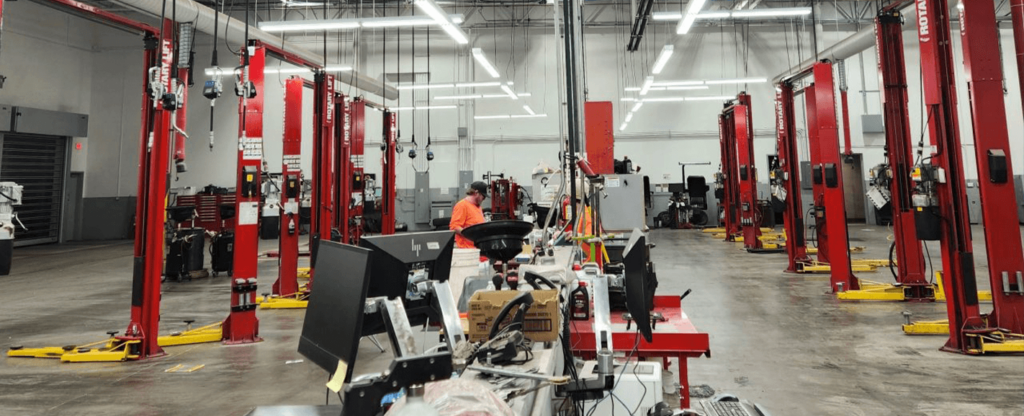
6. Promotes Facility Safety and Security
Inadequate lighting can lead to trips, falls, and industrial equipment accidents, as well as impact building security. Sufficient, bright lighting is necessary to create a safe workplace and comply with illumination requirements set by the Occupational Safety and Health Administration (OSHA).
LEDs offer bright, high-quality light to increase visibility inside workspaces, hallways, stairways, and outdoor environments, making these areas safer and enhancing occupant comfort. They also offer adequate lighting to deter vandalism and trespassing at facilities.
Unlike fluorescent bulbs, LEDs are mercury-free, eliminating the risk of mercury exposure.
7. Streamlines Efficiency When Connected to IoT
LED lights are dimmable, typically operate on low-voltage, and easily integrate with occupancy sensors, making them inherently suitable for the Internet of Things (IoT). Connecting a lighting system to IoT has many advantages, such as real-time monitoring and turning lights on and off via smart controls, helping achieve energy efficiency and decrease utility costs.
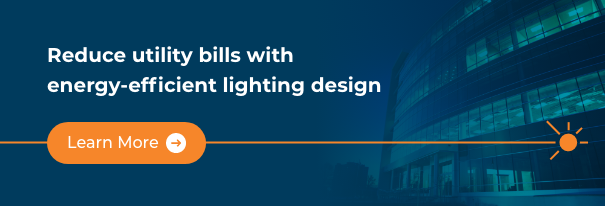
8. Decreases Operational Downtime
An organization could stand to lose over $100,000 per hour of downtime, so every minute counts. Since LEDs are durable and have long life spans, they won’t degrade as quickly as other bulbs, meaning you won’t have to stop operations to repair the lighting system as often. LEDs turn on instantly rather than needing to warm up, reducing downtime after a power outage.
9. Invites Various Funding Opportunities
Organizations can access various funding and financing options, like grants and utility rebates, to implement energy-efficient upgrades. At SitelogIQ (SIQ), our lighting and facility experts can help identify funding opportunities and assist you through the application process.
For example, we provided guidance and support as our customer, Metro Nashville Public Schools (MNPS), applied for grant funding through the local utility company’s School Uplift Program. MNPS was awarded over $450,000 to upgrade its energy systems.
We collaborated with the district to implement smart LED lighting and monitoring technology to track and forecast utility usage. Our partnership with MNPS helped the district experience an energy reduction of 8.5 million kWh and $900,000 in avoided costs. In the last 4.5 years, the district achieved an average energy reduction of 20%.
Additionally, efficient lighting design wins stakeholder confidence due to its ability to provide well-lit facilities, create greater safety for building occupants, and, in most cases, support higher productivity. Stakeholders may be excited to invest in your establishment’s sustainability initiative, including plans to retrofit existing lighting systems with LEDs.
10. Allows for Easy Energy-Use Monitoring
LED technology easily integrates with energy management software like mySiteIQ. As a facility intelligence platform, mySiteIQ helps facility directors, managers, and leaders get actionable building information in real-time. Utilize data and analytics to monitor, track, and record light use to compile accurate reports for stakeholders, identify opportunities for lighting improvements, and make more informed decisions.
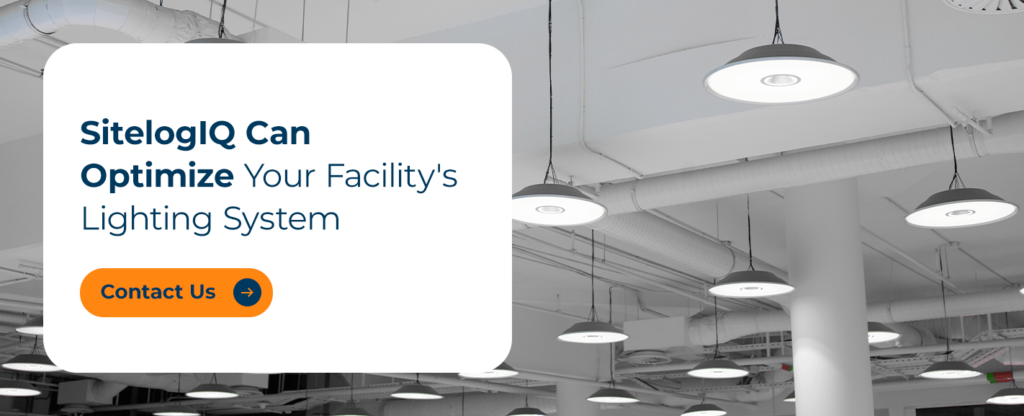
How SitelogIQ Can Optimize Your Facility’s Lighting System
Upgrading an outdated lighting system is essential to reach sustainability goals and cut energy costs. We can help your organization identify inefficient lighting systems by conducting an energy audit, and then recommend an energy-efficient solution that best aligns with your highest needs. Our centralized approach qualifies our experts to understand the unique demands of your facility as well as provide turnkey LED lighting solutions tailored to solve specific problems.
Contact us today to learn more.



